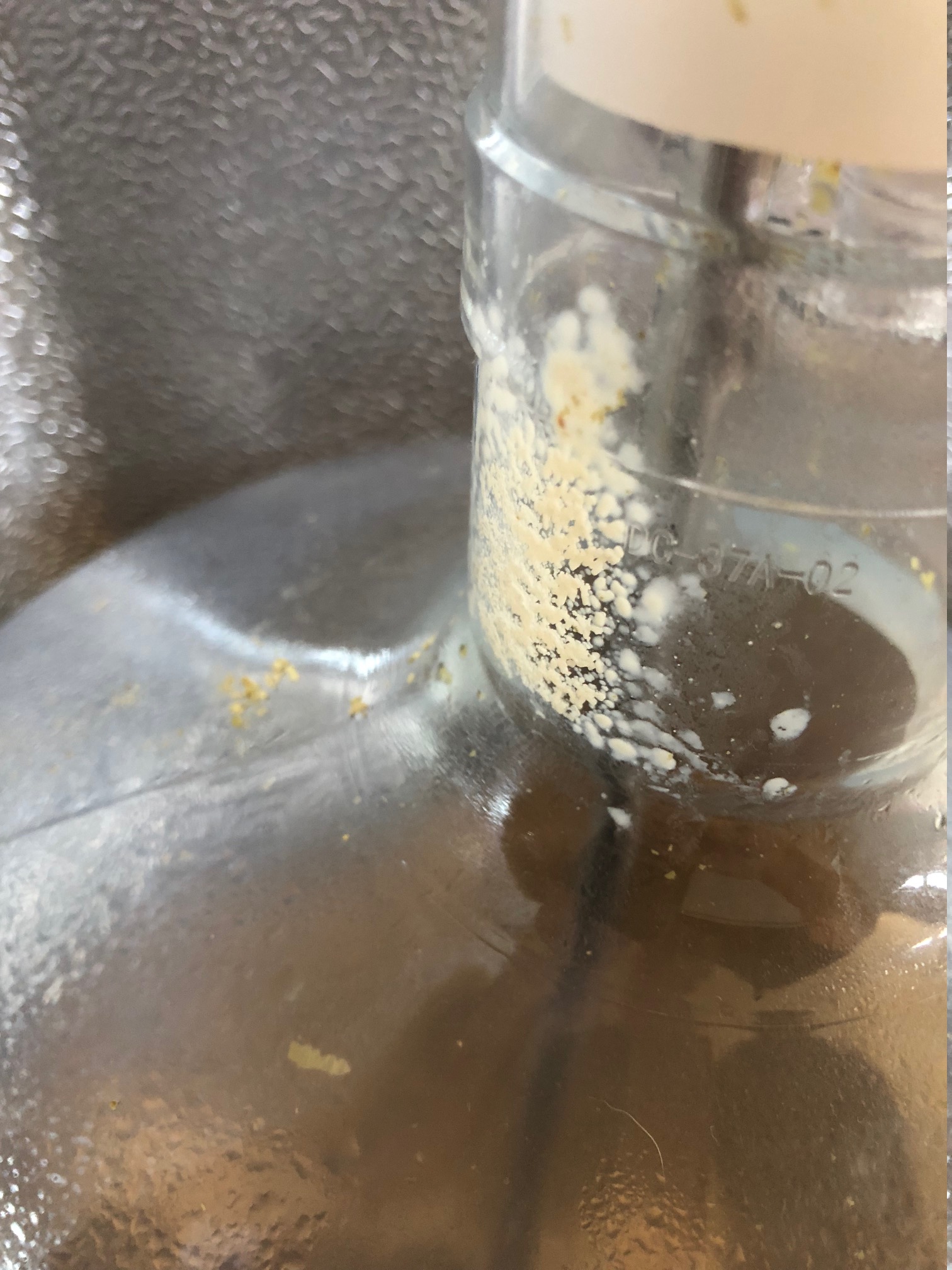wcspa
Member
Hi all,
I am a novice brewer and just started my first brew two days ago. I used a BSG TrueBeer Ingredient Kit for a Vienna Marzen style beer. So far things seem to be going okay but I have a question regarding the optimal temperature and duration of fermentation.
Per the kit's instructions it says to ferment at 65 degrees F for 3-7 days. The kit uses Fermentis Saflager 34/70 yeast and according to Fermintis' website, the optimal fermentation temperature is 53.6-59° F.
So my questions are as follows:
Should I lower the temperature to fit into the ideal range per the yeast manufacturer?
Also, since it is a lager yeast and requires lower temperatures, fermentation should take longer, right? If so how long so I keep it fermenting?
Unrelated to the above, I noticed some colonies growing in the neck of my carboy today. I suspect (and hope) it is just yeast. I have attached a photo for review. Is there any negative consequence of this?
Thanks in advance! I am looking forward to learning more about this whole cool process!

I am a novice brewer and just started my first brew two days ago. I used a BSG TrueBeer Ingredient Kit for a Vienna Marzen style beer. So far things seem to be going okay but I have a question regarding the optimal temperature and duration of fermentation.
Per the kit's instructions it says to ferment at 65 degrees F for 3-7 days. The kit uses Fermentis Saflager 34/70 yeast and according to Fermintis' website, the optimal fermentation temperature is 53.6-59° F.
So my questions are as follows:
Should I lower the temperature to fit into the ideal range per the yeast manufacturer?
Also, since it is a lager yeast and requires lower temperatures, fermentation should take longer, right? If so how long so I keep it fermenting?
Unrelated to the above, I noticed some colonies growing in the neck of my carboy today. I suspect (and hope) it is just yeast. I have attached a photo for review. Is there any negative consequence of this?
Thanks in advance! I am looking forward to learning more about this whole cool process!






















![Craft A Brew - Safale S-04 Dry Yeast - Fermentis - English Ale Dry Yeast - For English and American Ales and Hard Apple Ciders - Ingredients for Home Brewing - Beer Making Supplies - [1 Pack]](https://m.media-amazon.com/images/I/41fVGNh6JfL._SL500_.jpg)




































